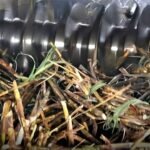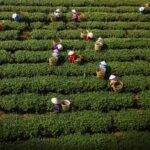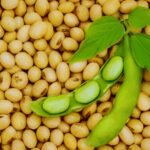By Muhammad Luqman
Pakistan’s mountains and plains hold more than beauty — they hide a treasure of healing plants that could change the future of the country’s medicine industry.
These medicinal plants in Pakistan have long supported traditional healing systems and now offer new hope for economic growth.
Traditional Healing and Herbal Heritage
From the snowy peaks of the north to the dry southern deserts, hundreds of medicinal and aromatic plants grow naturally across the land. For centuries, these plants have been used in traditional healing systems such as Unani and Ayurvedic medicine.
Today, Pakistan is home to more than 600 species of medicinal plants, providing a strong base for the herbal and nutraceutical industries. Yet, experts say this potential remains largely untapped.
Growing Herbal Medicine Industry
Hakeem Muhammad Ahmad Saleemi, President of the National Council of Tibb, said that more than 700 herbal medicine companies are registered with the Drug Regulatory Authority of Pakistan (DRAP), but only about 50 of them control most of the market.
Speaking to this reporter, Saleemi said Unani practitioners and herbal manufacturers commonly use Liquorice (Malathi), Borage (Gao Zaban), Violet (Banafsha), Sandalwood, Marshmallow (Khatmi), Mallow (Khubazi), Pellitory Root (Aqarqarha), Mace (Javitri), Indian Ginseng (Asgand Nagori), Linseed (Alsi), Chamomile (Babuna), Red Rose (Gulab), Aloe Vera (Kanwar Gandal), Basil (Tulsi), Lemon Grass, Mint (Podina), Fennel (Saunf), Kalonji (Nigella Sativa), Stevia (Honey Plant), and Turmeric (Haldi).
He stressed that Pakistan’s herbal medicine industry could grow much faster if research institutions, the private sector, and regulators worked more closely together. “Closer cooperation would make our traditional medicine stronger and more reliable,” he said.
Challenges in the Pharmaceutical Sector
But despite this natural wealth, Pakistan’s pharmaceutical sector still depends heavily on imports. “About 85 percent of the raw material used in our pharmaceutical industry comes from abroad,” said Amjad Ali Jawa, former chairman of the Pakistan Pharmaceutical Manufacturers Association (PPMA).
Jawa told this reporter that this dependence on imported ingredients highlights how little the local industry uses Pakistan’s own plants.
However, he added that herbal and Unani products made in Pakistan have huge export potential — especially in the US and Europe, where natural remedies are gaining attention.
He noted that a 100 percent duty imposed by the US on allopathic drugs from several countries, including India, has opened a new door for Pakistani herbal producers.
Export Opportunities for Herbal Products
“Since no Pakistani pharmaceutical product has yet received approval from the US Food and Drug Administration (FDA), there’s a big opportunity for herbal and nutraceutical products made from our local plants,” Jawa explained. “These products could perform strongly in Western markets.”
Experts agree that increasing investment in the research, cultivation, and processing of medicinal plants could not only reduce Pakistan’s reliance on imports but also boost exports and rural employment.
New Research and High-Value Crop Development
Dr. Muhammad Nawaz, a senior scientist at the Plant Physiology Section of the Ayub Agricultural Research Institute (AARI) in Faisalabad, said his institute is already developing new varieties of medicinal and aromatic plants to make the best use of Pakistan’s natural resources.
To this reporter, Dr. Nawaz shared that AARI has successfully developed several plant varieties, including Stevia ‘Honey’ and Tulsi ‘FS-21,’ both now approved for commercial cultivation.
He added that the Pakistan Agricultural Research Council (PARC) and the Pakistan Council of Scientific and Industrial Research (PCSIR) are also running projects to promote the growth of medicinal and aromatic plants across the country.
Economic Benefits and Local Production
He said the Punjab government has gone one step further by adding medicinal plants to its High-Value Crops Program. This allows farmers to grow these plants commercially on less fertile or unused land, helping them earn more.
Dr. Nawaz explained that raw materials for cough syrups, blood pressure medicines, and anti-malarial products can easily be produced from locally grown herbs.
“If we focus on using homegrown raw materials, Pakistan’s pharmaceutical sector can reduce its import bill and strengthen its economy,” he said.
Author Profile
-
Muhammad Luqman is an experienced journalist specializing in agriculture, livestock, and rural development in Pakistan.
He writes insightful reports on government initiatives, economic potential, and policy impacts in the agriculture and livestock sectors, highlighting how local programs shape livelihoods and boost national and international markets.





